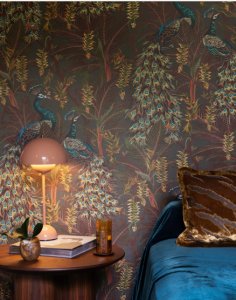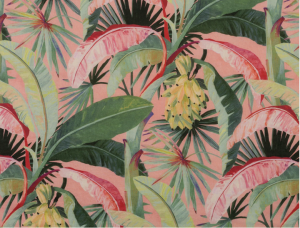For Shane McLucas, the concepts of “design” and “erosion” are far more than mere industry terms; they are deeply philosophical lenses through which he views the world, his work, and even life itself. While “design” represents creation and intention, “erosion,” paradoxically, speaks to him of the natural cycles of change, resilience, and the beauty found in imperfection.
Design: The Language of Intention and Connection
 To Shane, design is the ultimate language of intention. It’s not just about aesthetics; it’s about crafting experiences, solving problems, and evoking emotion. Whether he was sketching fashion designs, laying out patterns for a new collection, or conceptualizing the flow of a home, design was about foresight and deliberate creation.
To Shane, design is the ultimate language of intention. It’s not just about aesthetics; it’s about crafting experiences, solving problems, and evoking emotion. Whether he was sketching fashion designs, laying out patterns for a new collection, or conceptualizing the flow of a home, design was about foresight and deliberate creation.
In fashion, design meant understanding the human form, anticipating trends, and communicating a specific mood or identity through fabric and cut. It was about making people feel confident and beautiful. When he transitioned to interior design, this extended to creating spaces that fostered comfort, joy, and a sense of belonging. The carefully selected furniture, the play of light, the texture of materials – all are intentional design choices aimed at shaping an emotional response.
This philosophy reached its zenith with the Victoria and Albert Guesthouse. Here, “design” became a holistic endeavor. It wasn’t merely decorating rooms; it was about curating an entire guest experience. From the moment a guest steps through the door, every element is designed to convey warmth, sophistication, and a sense of escape. The layout of the restaurant, the ambiance of the café, the functionality of the event space – all are meticulously designed to create seamless, memorable interactions. For Shane, good design connects people to spaces, to experiences, and ultimately, to each other. It’s about creating an atmosphere where memories are made.
Erosion: The Beauty of Resilience and Natural Evolution
 While “design” focuses on purposeful creation, “erosion” might seem its antithesis. However, for Shane, it carries a profound significance, representing the powerful, natural forces of change, refinement, and even resilience. He doesn’t see erosion as destruction, but as a process that shapes, reveals, and often strengthens.
While “design” focuses on purposeful creation, “erosion” might seem its antithesis. However, for Shane, it carries a profound significance, representing the powerful, natural forces of change, refinement, and even resilience. He doesn’t see erosion as destruction, but as a process that shapes, reveals, and often strengthens.
Think of how water or wind sculpts landscapes over time, revealing hidden layers and creating unique textures. This resonates with Shane’s journey. His diverse career, marked by shifts from fashion to interior design to business coaching and finally hospitality, can be seen as a process of personal “erosion.” Each experience, each challenge, has worn away at certain aspects, while simultaneously strengthening others, revealing core competencies and passions. The “Balmain boys don’t cry” mantra instilled in him a certain resilience – an ability to weather storms and emerge stronger, much like a rock eroded by waves becomes smoother yet more enduring.
In an artistic sense, erosion speaks to the beauty of natural patinas, aged materials, and the character that time imparts. It’s the subtle wear on an antique, the faded elegance of an old textile, or the charming imperfections in a renovated building. For Shane, this appreciation likely influences his design choices, perhaps leading him to incorporate elements that feel authentic and have a story, rather than something purely pristine and manufactured. He understands that true beauty can often be found in the marks of time and the history they convey.
 Ultimately, for Shane McLucas, the interplay between design and erosion encapsulates his understanding of a purposeful life. He designs with intention, crafting beauty and experience, while embracing the natural forces of change and adaptation that have shaped his extraordinary journey. It’s a dynamic balance between deliberate creation and the acceptance of evolution, culminating in a life rich with purpose and an enduring legacy of refined craftsmanship.
Ultimately, for Shane McLucas, the interplay between design and erosion encapsulates his understanding of a purposeful life. He designs with intention, crafting beauty and experience, while embracing the natural forces of change and adaptation that have shaped his extraordinary journey. It’s a dynamic balance between deliberate creation and the acceptance of evolution, culminating in a life rich with purpose and an enduring legacy of refined craftsmanship.

